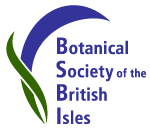Charles Bailey
From Wiki
Mr Charles Bailey (18/6/1838-14/9/1924)
- Born: 18th June 1838 - Coventry, Warwickshire.
- Died: Sept 1924
Eldest of four brothers – Charles, John Eglington, James and George Henry
In 1861, the four brothers and their widowed mother are recorded in the National Census as living at Dorset Street, Hulme, Manchester. Charles is described as a cashier to a shipping merchant, whereas his brother John is recorded as a commercial clerk. Both brothers worked for the Ralli Brothers whose trading links extended from Manchester, London, through the Mediterranean, to Calcutta and India [1]. Bailey was to work for this company for 55 years, until he retired aged 70. Just as he was committed to his work, so he was to his church – the Chorlton Road Congregational Church. Here, he was Deacon and also Secretary – the latter for 26 years. He also taught at their adult bible classes for many years. It was at this church that he married Hannah Dean (from Whalley Range) in 1870.
Bailey’s interest in plants was evidenced by his attendance at the evening course in Botany, presented by Professor W C Williamson. His debt to Williamson is acknowledged when he presented his herbarium to the Victoria University (now Manchester University)[1]. This and other courses were held in Owen’s College (in Old Quay Street).
He became a member of the Scientific Students’ Association, and the Manchester Scientific Students’ Microscopical Club (the latter being founded at Bailey’s house in 1867). The club only had seven members, so that all could sit around a table and examine the specimens under consideration (the founder members were Thomas Pearce, John Hardy, Walter Morris, John Barrow, Mark Stirrup, FGS Bowden & Charles Bailey[1]). In 1875, the members of the club decided on a new name – The Leeuwenhoek Microscopical Club. Bailey was also elected to the Manchester Literary and Philosophical Society. He was an active member of the society, contributing botanical communications (for example on sandhill vegetation) and serving on the council. He was also Treasurer and President (from 1901 to 1903).
In 1879, Bailey took on the role of Secretary for the Botanical Exchange Club. Shortly after his appointment, he also acted as Distributor for the Club. This resulted in an objection by the Rev Edward Francis Linton (and some others) on the basis that this was a departure from the principle of the separation of the scientific and administrative aspects of the Club. Whilst it is possible that the argument reflected a genuine constitutional concern, it is equally possible that there were differences between the ‘well connected’ Rev Linton and the ‘man of trade’ (see The Botanists by D E Allen, 1986). Bailey gave time, energy (and money) to the Club for many years, finally resigning as Secretary in 1902.
Despite his work and the commitments mentioned above, he maintained throughout his life an abiding interest in field botany. In 1899, he started the Manchester Field Club and at the inaugural meeting he addressed the club on ‘The Oxslip and its relations with the Cowslip and Primrose in England’; his last offering to them dealt with the complexities of the genus Rubus.
He collected specimens (from 1861 onwards) from all parts of the British Isles for his herbarium. Some of these he collected, others he obtained through the Botanical Exchange Club, and others he bought. He amassed some 300,000+ specimens. At first, these were housed in an old stable next to the house in Whalley Range. When he moved to St Anne’s, he had two adjoining houses – one for living in and one for the herbarium. When he moved to Cleeve Hill near Cheltenham, a special building was created to house all the specimens (these were held on sheets measuring 17.5 by 11.5 inches, in boxes 18 by 12 inches). The room for his collection was 42 by 25 feet, warmed by a set of hot water pipes and well ventilated.
Dr Cosmo Melville (another avid collector) was a friend and as they did not want their collections to overlap, so they agreed (quite early in their collecting careers ‘to divide the world between them’. Bailey focused on the British Isles, Europe and African countries bordering the Mediterranean; he also endeavored to collect many specimens of each species over its geographical range.
Bailey spent his final years near Torquay, overlooking Babbicombe Bay. He died in September 1924, aged 87.
Examples of handwriting
references and external links
- Weiss, F. E. 1930. North Western Naturalist, Vol 5, Three Manchester Botanists : Leopold Hartley Grindon, Charles Bailey, James Cosmo Melville.
The above material kindly supplied courtesy of Leander Wolstenholme. Chris Liffen Feb, 2008
- Search for specimens collected by Charles Bailey.




